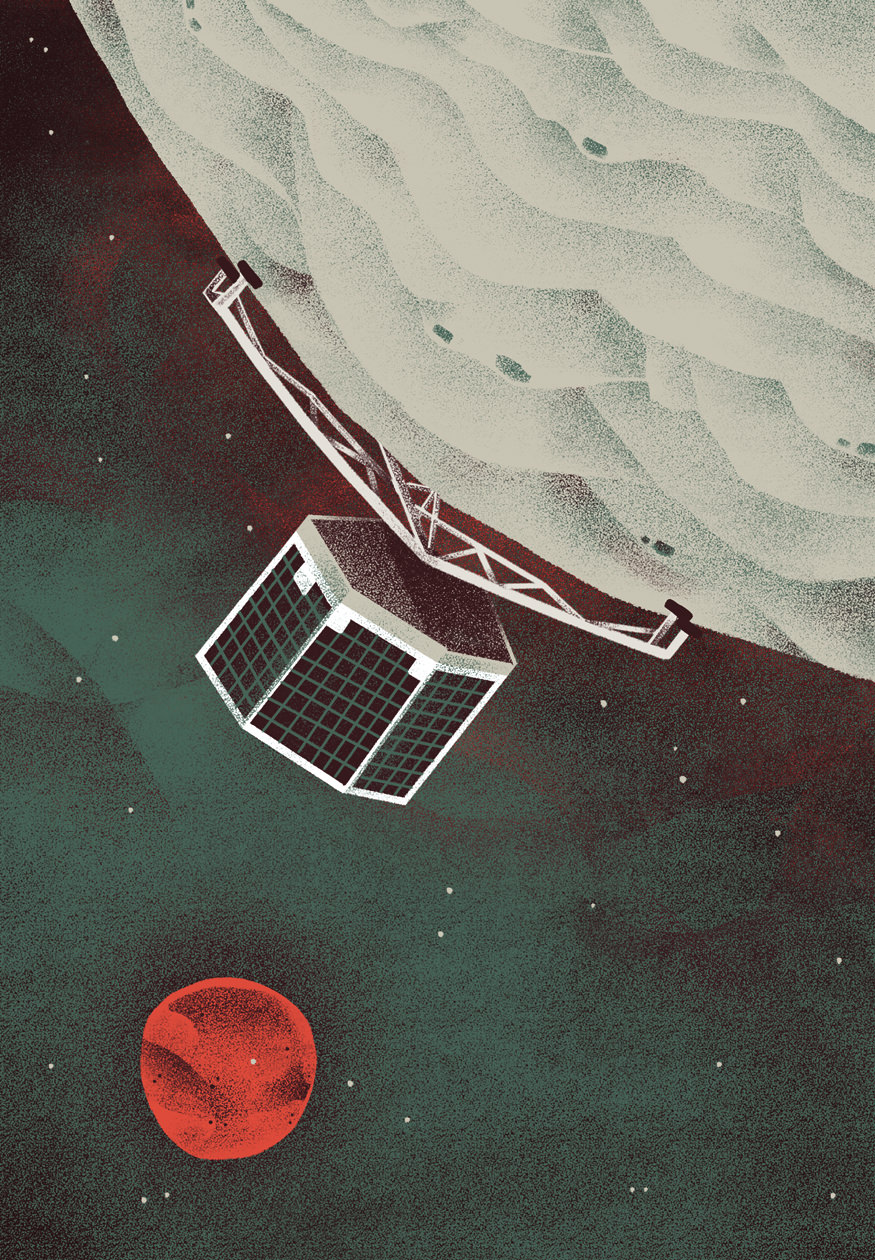A Cosmic Rendezvous
The Rosetta mission.

Small step or giant leap—call it what you will, it was historic. On November 12 of last year, the European Space Agency made history by landing its Philae probe onto the surface of a 4.5-billion-year-old ball of ice and cosmic dust currently flying past the sun at a top speed of 135,000 kilometres per hour.
The technical challenges of flying a rocket anywhere are pretty staggering; in this case, the first-ever comet landing, they are doubly so. On its way to comet 67P/Churyumov-Gerasimenko (its official name), the Rosetta spacecraft had to dodge asteroids, do a high-risk flyby of Mars to correct its trajectory, and overcome a leak in its propellant system.
And even with these adjustments and readjustments, the best-laid schemes still went awry. When Philae’s specially designed harpoons didn’t deploy as planned, the lander bounced off the low-gravity surface rather than settling smoothly. On the third bounce, the lander came to rest softly in the shadow of a ridge, limiting the amount of sunlight its solar panels could collect and dooming its on-board batteries to a slow death.
In the end, it seemed not to matter much. Before the lander shut down, it sent back a treasure trove of data about the 67P’s surface and the composition of the exceptionally hard ice and carbon-rich dust found upon it. By extension, such data has answered some intriguing questions about what life is made of, and from where it comes.
Can’t bring yourself to geek out on the science? Then think of this: landing on a comet—this is the stuff of inspiration, the spark that gets minds thinking about the physics of all things. What else is out there? What else can we reach? After all, is that not what the heavens are for?







